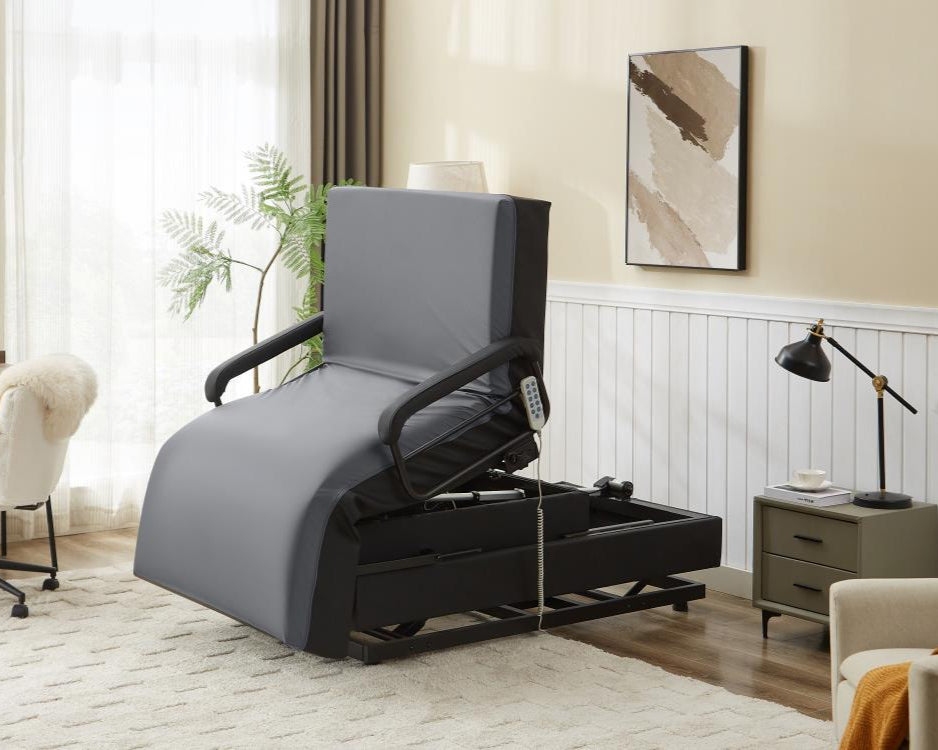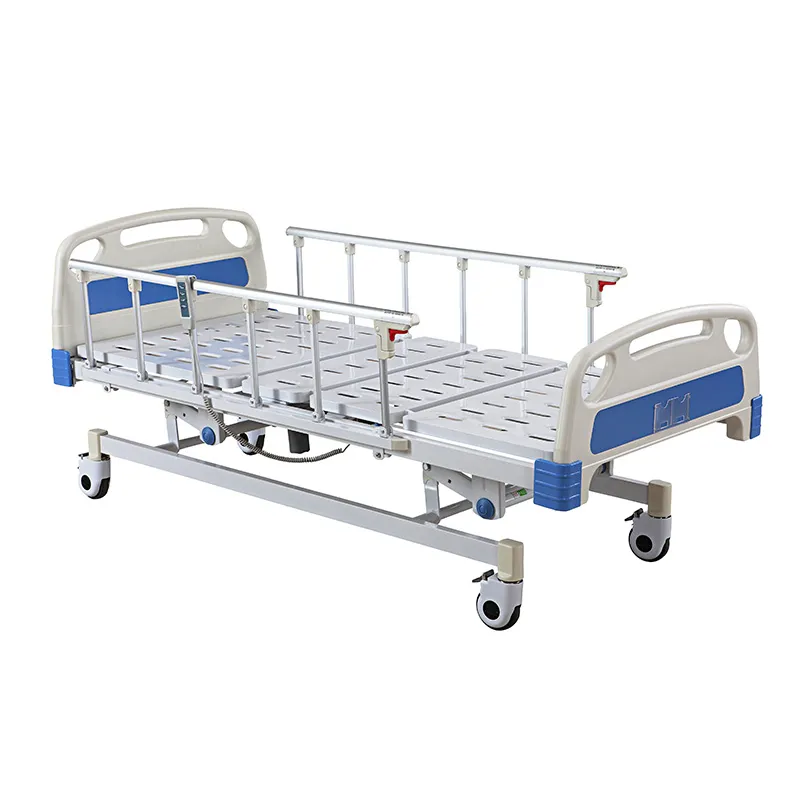Hospital Beds For Home Use Can Be Fun For Anyone
Hospital Beds For Home Use Can Be Fun For Anyone
Blog Article
Some Known Details About Hospital Beds For Home Use
Table of ContentsHospital Beds For Home Use - An OverviewThe Greatest Guide To Hospital Beds For Home UseWhat Does Hospital Beds For Home Use Do?The Basic Principles Of Hospital Beds For Home Use The 8-Second Trick For Hospital Beds For Home UseThe Single Strategy To Use For Hospital Beds For Home UseA Biased View of Hospital Beds For Home Use
Next, we will check out the attributes, makes use of, and Pros and Cons of each type of healthcare facility bed in depth. A manual medical facility bed is the many fundamental type of hospital bed, and all adjustment features are attained via a hand-cranked device.These hand-cranked tools are typically installed at the foot or side of the bed, and the caregiver or client can change the height or tilt angle of the bed by shaking the manage. Considering that no electric parts are needed, are usually less expensive than electric hospital beds, suitable for medical institutions or families with minimal budget plans.
Examine This Report about Hospital Beds For Home Use
For people who need to change their stance or height regularly, hands-on beds might not be practical sufficient because each modification needs manual procedure. If the bed needs to be readjusted frequently, nursing staff might need to spend more physical strength to run the hand-cranked device - hospital beds for home use. Manual beds are usually appropriate for clients in the recuperation duration or occasions with low nursing demands
Typically, the adjustment of the back and legs is regulated by electric motors, while the general height adjustment still requires to be done by hand. The purpose of this style is to minimize costs and energy consumption while keeping high functional ease. Contrasted with manual health center beds, semi-electric medical facility beds are easier in adjusting the back and legs, specifically for clients who require to adjust their stance often.
Considering that only some functions rely on electrical power, semi-electric healthcare facility beds eat less power during use. Considering that the overall elevation still requires to be adjusted manually, it may not be as practical as fully electrical healthcare facility beds for people who need to readjust the bed height often. Compared to manual hospital beds, semi-electric medical facility beds are slightly a lot more complicated to operate, calling for individuals to understand the combination of electrical and hand-operated operations.
Electric medical facility beds have high adjustment accuracy and can be exactly gotten used to a certain angle and elevation according to the needs of clients to give one of the most comfy assistance. All-electric hospital beds are usually outfitted with a variety of additional features, such as integrated scales, mattress stress adjustment, etc, to meet the special demands of different clients.
Hospital Beds For Home Use for Dummies
A reduced bed is a specifically made healthcare facility bed that can be adapted to a very low degree, usually only a few inches from the ground. The objective of this style is to minimize the risk of people dropping from the bed, particularly for people who are at threat of dropping, such as the elderly or clients with restricted movement.

The 7-Minute Rule for Hospital Beds For Home Use
provide a treatment atmosphere appropriate for youngsters's elevation and body shape, increasing the comfort and safety and security of children. Some pediatric beds are also equipped with brightly colored bed rails or anime designs to lower the concern of children in the healthcare facility setting. For kids who need to remain in bed for a lengthy time, try this out pediatric beds are typically equipped with anti-bedsore cushions, adjustable bed rails and various other features to offer detailed treatment support.
The distribution bed is likewise geared up with postpartum recuperation features, such as mattress modification, bed heating, and so on, to assist mommies recuperate faster. The intensive treatment bed (ICU Bed) is designed for the critical care unit (ICU) and has extensive monitoring and nursing features. This type of bed is normally outfitted with user interfaces for a selection of monitoring tools, which can check the patient's vital indications in actual time, such as heart rate, high blood pressure, respiration, etc.
Rumored Buzz on Hospital Beds For Home Use
The intensive treatment bed has a completely electrical change feature, which can quickly adjust the angle and position of the bed to meet the requirements of various treatments and care. The design of ICU bed considers the need of rescue procedure. The bed can be rapidly readjusted to the most suitable rescue position and accept using rescue equipment.
It can efficiently isolate clients from the outdoors globe and reduce the threat of infection transmission. Isolation beds are normally geared up with special bed drapes or securing covers and attached to air purification systems to keep the air around the bed clean. Isolation beds are specially developed to avoid the spread of microorganisms from infectious clients and safeguard the safety of other people and clinical team.
Isolation beds are equipped with air filtration systems that can filter microbes and particle matter airborne to maintain the air around the bed clean. Elevated and reduced manually by a crank or a hand-held control. Crank, hand-held control, hand-operated laborRaised and decreased using an electrical motor. Can likewise be adapted to various positions.
8 Simple Techniques For Hospital Beds For Home Use
Broader and stronger than a common bed. Obese, weight problems, patient sizeDesigned for patients at danger of falling out of bed. Reduced to the ground than a common bed.

In a health care visit homepage setting, choosing the ideal bed can not just improve the efficiency of treatment, yet likewise dramatically boost individual comfort and safety. By recognizing the types and uses these beds, medical care facilities and family caretakers can better sustain and look after their patients.
A Biased View of Hospital Beds For Home Use
HomeCare Hospital Beds, a division of DiaMedical U.S.A., is committed to giving complete transparency for its clients. Patients can be bewildered by the various options in lengthy term treatment items, and HomeCare Health center Beds is dedicated to improving this procedure, while ensuring consumers obtain the info and support they need.
Medicare Component B (Medical Insurance) covers medical facility beds as long lasting clinical equipment (DME) that your doctor recommends for usage in your home. After you fulfill the Component B insurance deductible you pay 20% of the Medicare-approved quantity (if your supplier accepts task). Medicare spends for various kinds of DME in different ways.

Report this page